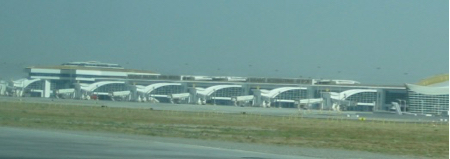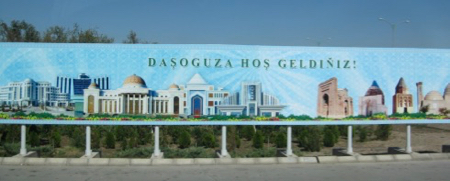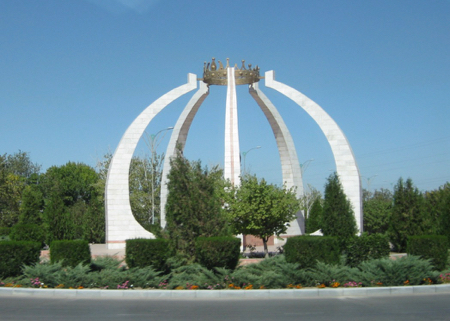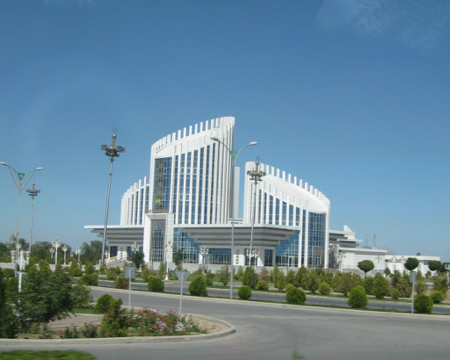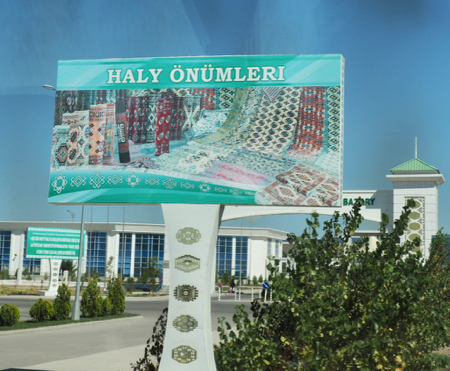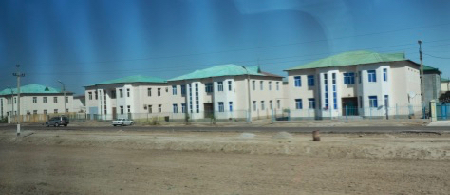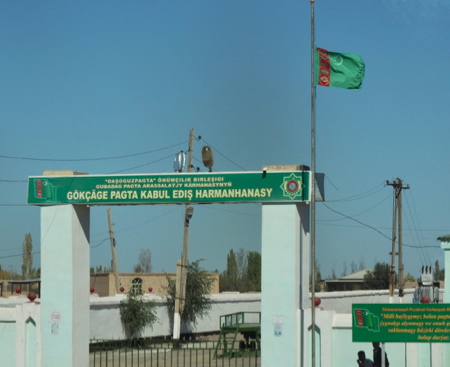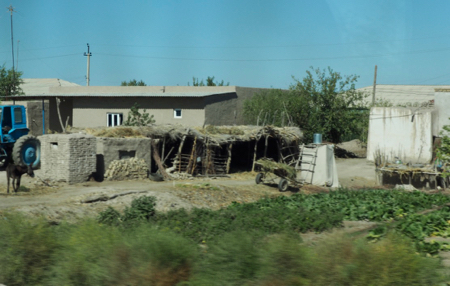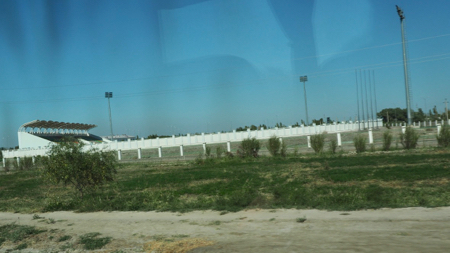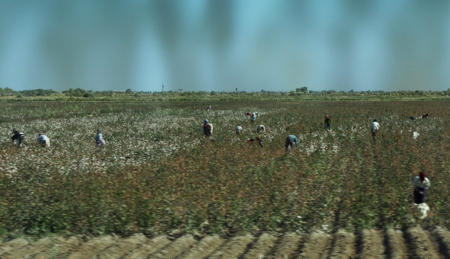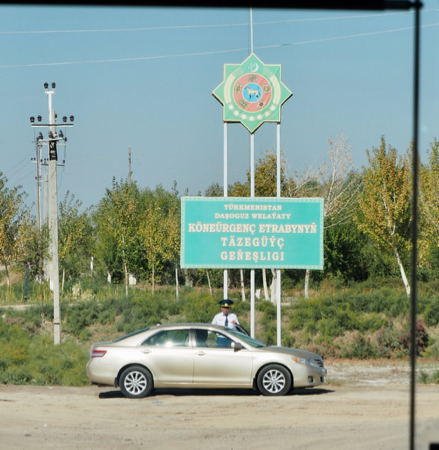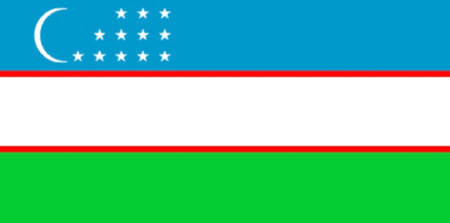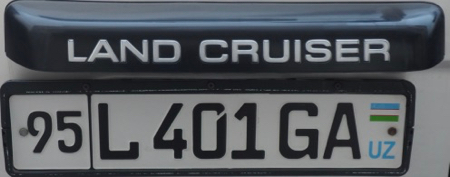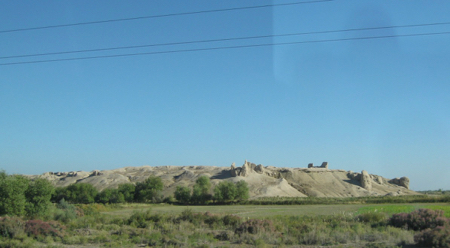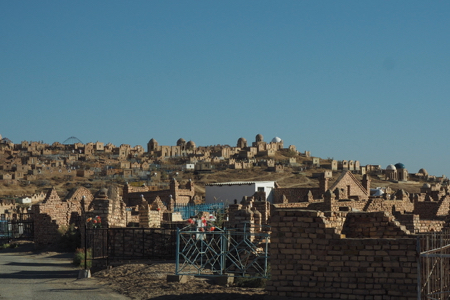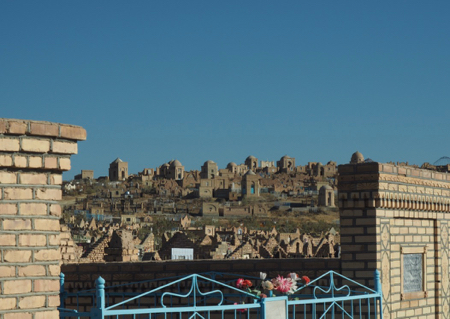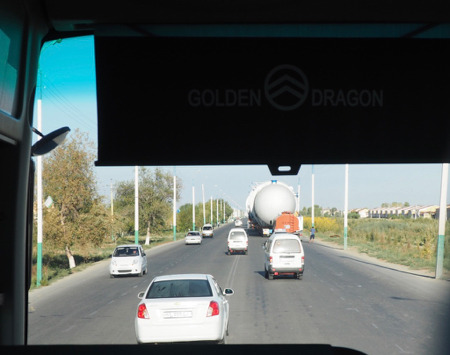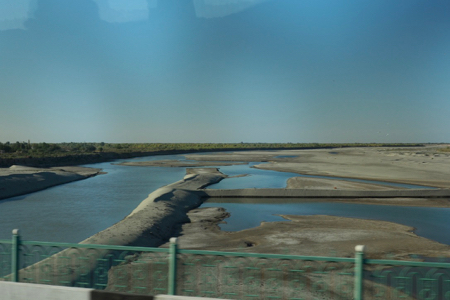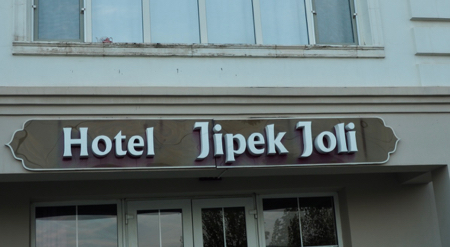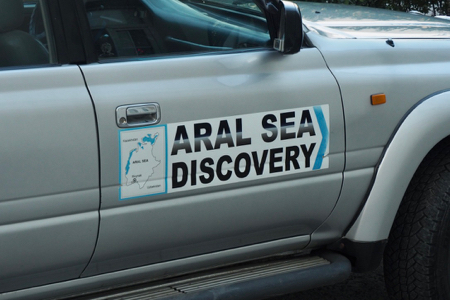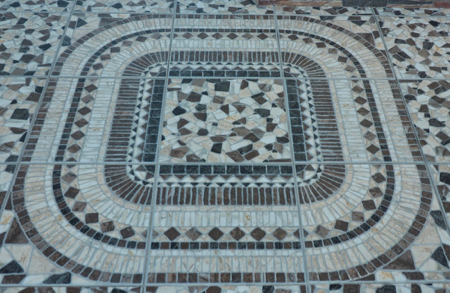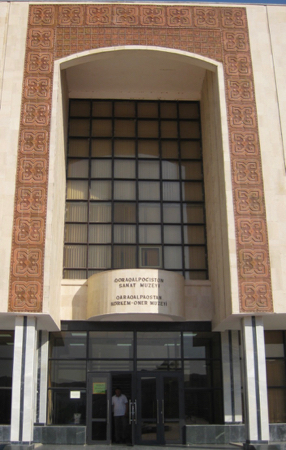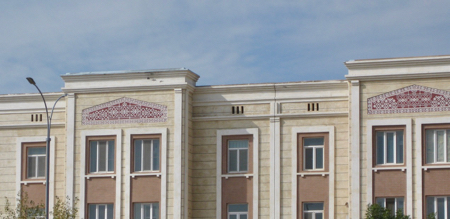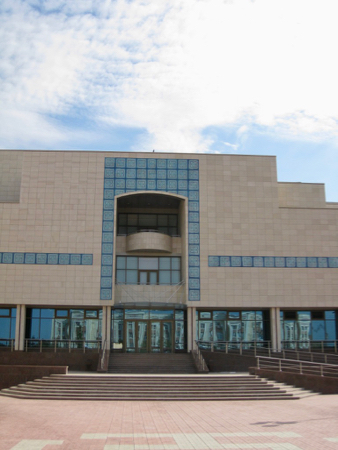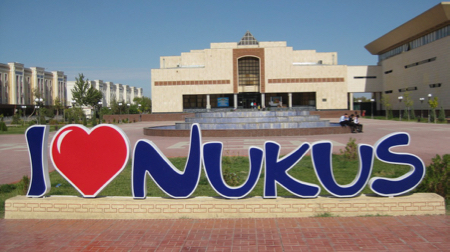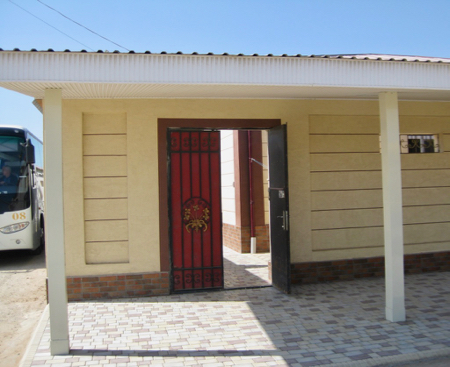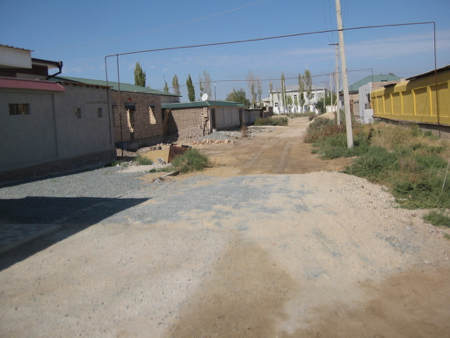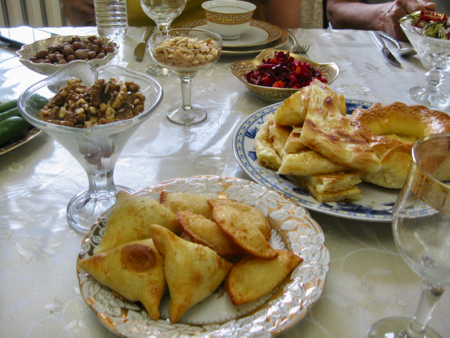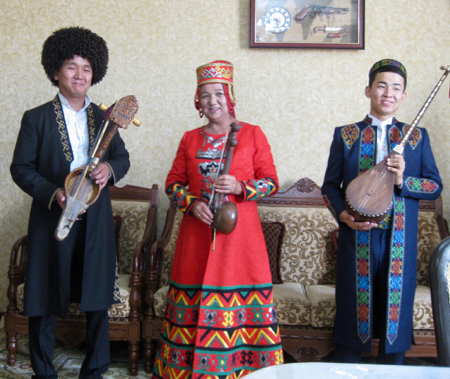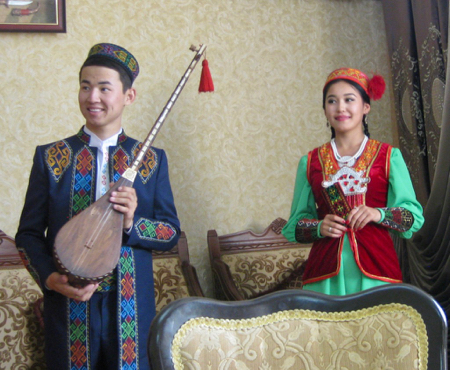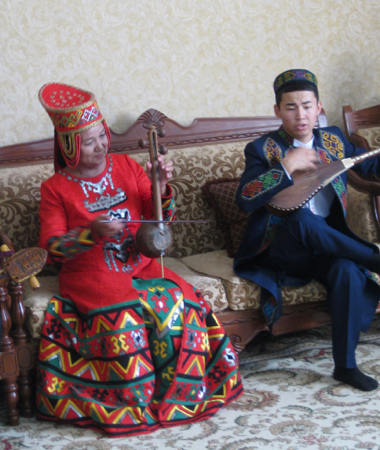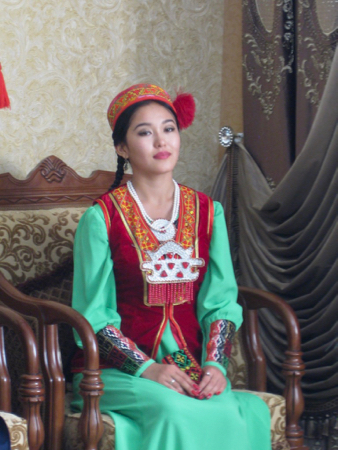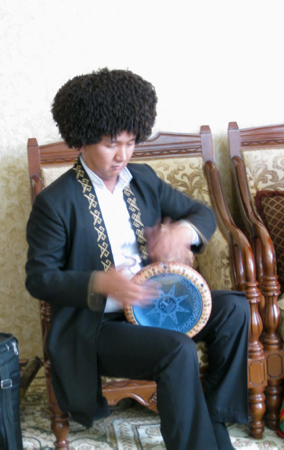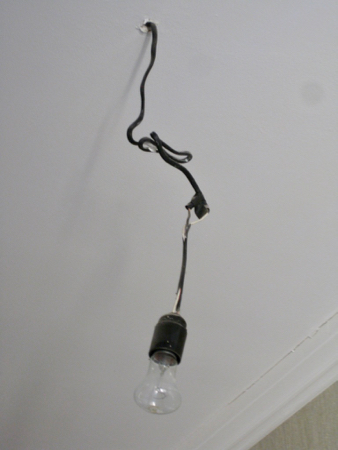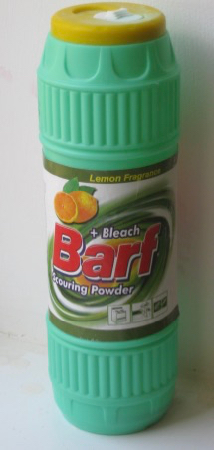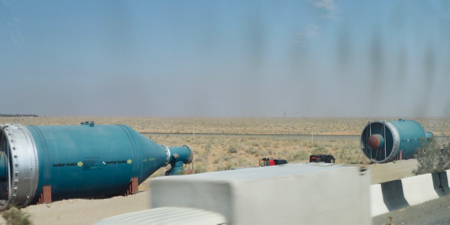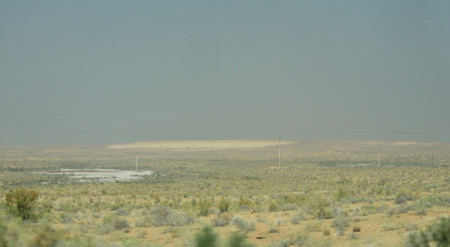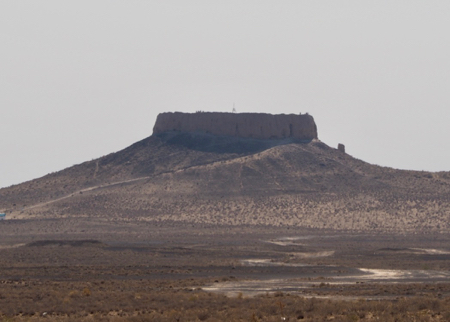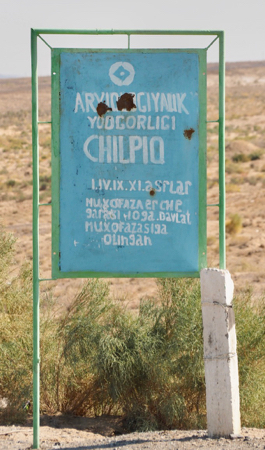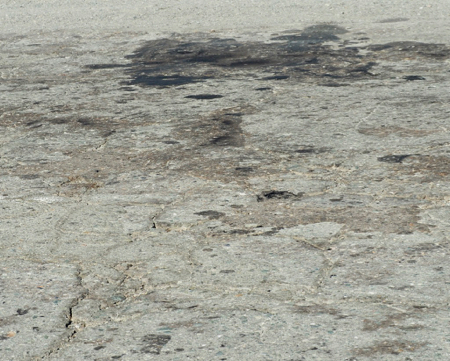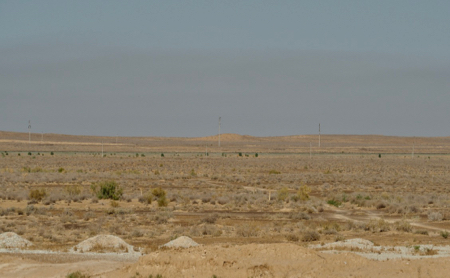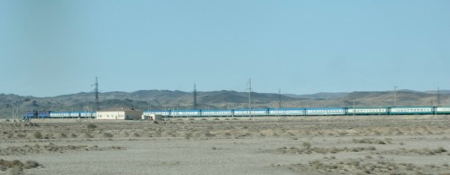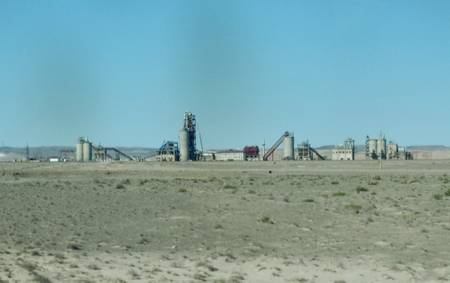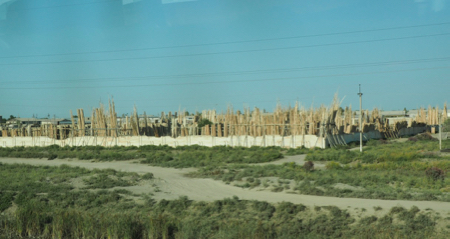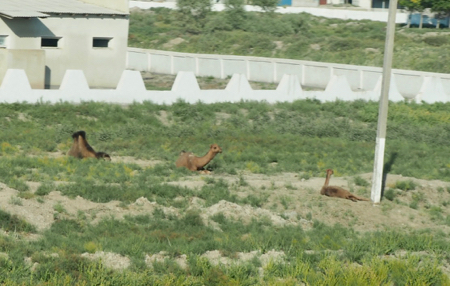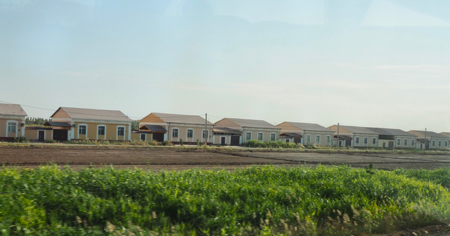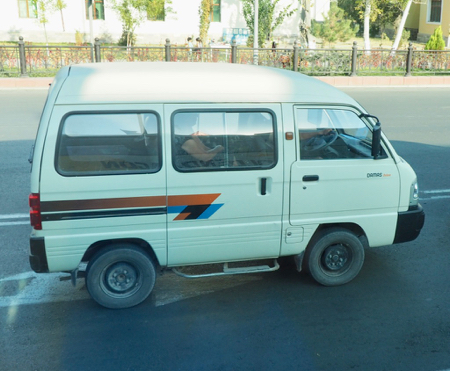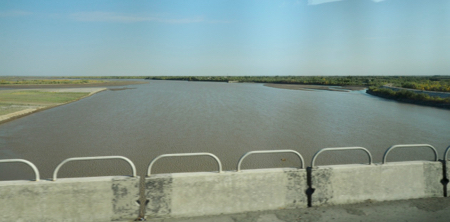Thurs., 9/27/18 - Ashgabat to Nukus, Uzbekistan
There was no action at the Ashgabat International airport and we finally learned from Jalol that air space over Ashgabat was closed until the Independence Day military display and helicopter fly-over were completed. All the men in Ashgabat were in black suits and ties and white shirts. We did not see any non-military people watching the parade. Maybe they only get to see the events in the stadium. TVs in the airport were broadcasting the celebration. We finally boarded our plane 50 minutes late.
Ashgabat International Airport main terminal - a Turkmen bird
Jetway gates carry through the bird theme
Welcome to Dashoguz
We arrived at Dashoguz (formerly Tashau), an oasis town on the Silk Road in northern Turkmenistan. We had less than an hour to eat our lunch at a nearby new hotel. They had packed up our meals in case we would have to eat it on the bus. The border closes at 5 PM and we now won’t get there before 4:30 because of the late departure at the airport.
Dashoguz has 1.4 million people and is the third largest city in Turkmenistan. It was founded by Silk Road travelers because it was an oasis with underground springs. There are only ten white marble buildings in Dashoguz. We saw lots of cotton fields. This area is irrigated from four canals from Uzbekistan. There are factories here, mostly black or colored cars, and mostly Soviet era flats or twin houses with green metal roofs. The bazaar is outside the city and is built in the shapes of the region’s carpet designs.
There are so many white marble monuments in Turkmenistan that it is almost impossible to identify most of them!
Wedding Palace
Sign for Turkmen carpets
Housing in Dashoguz
The bazaar
Local farm
For horse racing
Picking cotton by hand
Last photo before the border
We passed through the border without any problems. Gloria’s replica of an antique walking stick brought interest enough for everyone in the Turkmenistan customs office to come and look at it. We must have shown our passports 7 or 8 times, but all of the officials were very nice.
Flag of Uzbekistan
Remains of a 4th c. BCE fort, Gyaur Kala, that was destroyed in the 13th c. by the Mongols.
Mizdakhan Necropolis
Mizdakhan Necropolis
A very wide load on the highway to Nukus
The Amu Darya River - the ancient Oxus River of Alexander's time
Fri., 9/28/18 - Nukus to Khiva, Uzbekistan
Nukus is the capital of the autonomous Karakalpakstan Republic. It is autonomous partly because it was “part of Russia” and a “closed city” during the Soviet era. The Red Army researched and developed chemical warfare weapons here. Karakalpakstan takes up about 1/3 of Uzbekistan but is considered part of Uzbekistan.
The main reason for staying in Nukus was to visit the world-famous Savitsky Museum - formally: The State Art Museum of the Republic of Karakalpakstan or just the Nukus Museum of Art. Prior to our visit, we watched a wonderful and informative documentary about the Museum. Igor Savitsky saw how the Soviets and Bolsheviks were destroying Uzbekistan traditional art and sought to collect and save robes, textiles, rugs, and decorations from destruction. He also collected Avant-garde paintings that were forbidden and destroyed in the 1920s and 1930s. Uzbekistan was considered “the desert of forbidden art” and painters came here to paint what they wanted instead of having to paint in the style called Socialist Realism.
There are also some finds from archaeological sites in Uzbekistan: jewelry from the 10th c, pottery, and textiles. The museum is impressive when you realize what all could have been lost or destroyed by the Soviets.
Our hotel
Tour to the Aral Sea that the Russians have destroyed
Mosaic at the hotel
Main entrance to the Savitsky Museum
Museum facade
Second building of the Savitsky Museum
We had lunch with starters, a variety of nuts, soup, and flat noodles with turkey, and cakes (dry) for dessert. The table was set for 16 with fine dishes and was at the home of the owner of our hotel. A family of musicians entertained after lunch.
Entrance
Street outside
Lunch
Musical family
Son, with a Dutor, and daughter, singer
Mother and son
Singer
Drum
Electrified
In our host's bathroom - interesting name for a cleaning product
Outside of Nukus we were back in the desert with VERY bad roads. We have a four-hour drive to Khiva, a distance of about 126 miles.
We had a photo stop at a mesa where Russian archaeologists have found a 4th or 3rd c. BCE Zoroastrian Tower of Silence. Zoroastrianism was the world’s first monotheistic religion.
Our road is four lanes. The two going south are new and smooth and the two lanes we are traveling on are in terrible shape. Only our bus is using the old lanes. Others are illegally using the smooth road going against traffic - visualize driving the wrong way on a freeway.
Interesting cargo
Kyzyl Kum Desert
Zoroastrian Tower of Silence
Sign for a Russian archeological site
Main highway
Kyzyl Kum Desert
A train
Industry in the desert
Lumber yard
Camels relaxing
Local housing
Cute little Damas Deluxe by Daewoo
The Amu Darya, again
| Return to Top | Return to Itinerary | Return to Trips page to view other trips | Return to Dreamcatcher Home Page |

